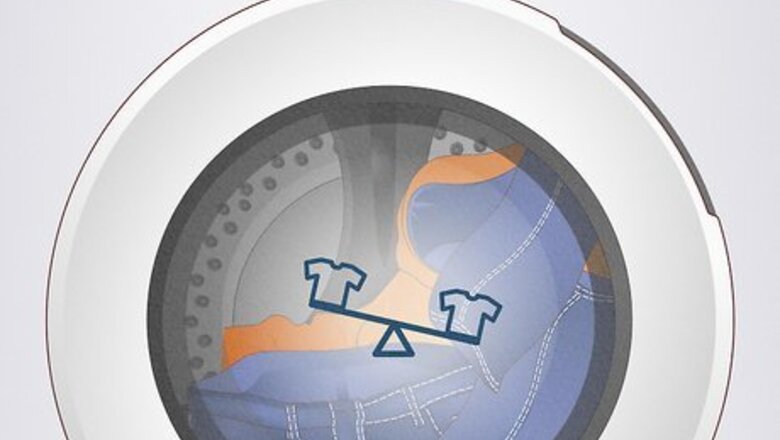
views
- The odds are high your washing machine is unbalanced, the load is too big, or you used too much soap.
- Clean the lid latch and the divot where the lid latch goes with a clean cloth if your lid isn’t staying closed.
- Check the drive belt inside the machine to determine if it’s broken, torn, or loose.
Quick Fixes to Common Problems
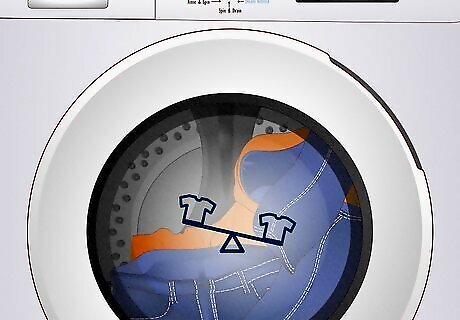
Look to see if the load is unbalanced. If the drum has suddenly stopped mid-cycle, your wash load was likely too heavy or asymmetrical. If the drum is overloaded, remove half of the clothes. If they’re bunched up on one side, spread them back out.
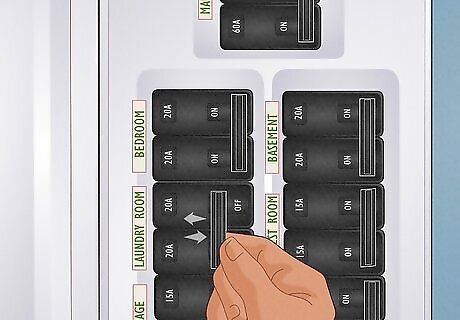
Check the fuse box and outlet for power failures. Start with the easiest fix by checking the plug in the outlet. Then, if the circuit breaker is flipped, reset the fuse and run the cycle again. Last, check the outlet itself to ensure it’s actually working by plugging in a phone charger or nightlight. If it isn’t working, call an electrician.

Confirm that your machine is level. Put a level on the machine to ensure it’s flat. If it isn’t, prop the machine up and set a brick or small object under the machine. Then, adjust the casters on the bottom of the front legs to change the height. Continue making minor adjustments until the machine is perfectly flat.

Look for excessive suds inside the drum. If you see a ton of soap bubbles inside of the machine and/or you see an error code like “5d,” “Sd,” or “Sds” on the machine, your Whirlpool has detected too many suds in the machine. Your machine will automatically finish the cycle once most of the soap has dissipated. In the future, use less soap in your wash cycles.
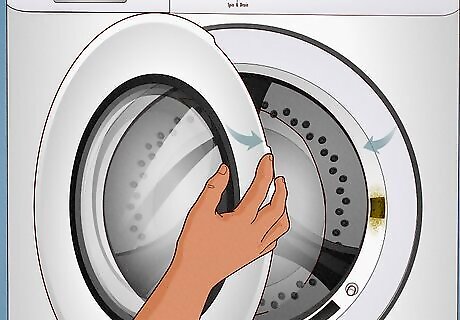
Open and close the lid multiple times to test the lock. Whirlpool machines should “click” when the lid is closed, so open and shut the lid a few times. If you don’t hear that clicking noise to confirm the machine is locked, the mechanism is likely stuck. If you do hear the click and there’s no error on the screen, the lid is probably fine. If you see “ld” or “ldl” on the screen, your Whirlpool has detected an error in the lid.
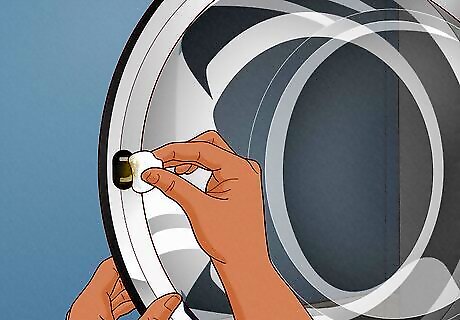
Clean the latch and the divot on the lid. Grab a clean cloth and soak it in water. Wring the excess water out and wipe down the lid mechanism on the machine. Wipe away any gunk, lint, or dust. Then, clean the small latch mechanism on the lid. If the latch doesn’t have any resistance and it freely moves back and forth, it’s likely broken and you need a new lid. Contact a professional appliance repair company to have them replace the lid.
Inspecting the Drive Belt
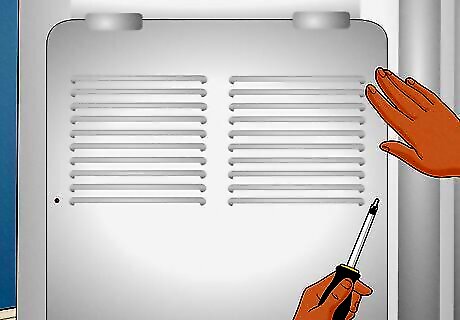
Unlock the panel directly underneath the drum. If you have a top-loading machine, remove the bottom panel. For a front loader, remove the back. Unplug the machine if you haven’t unplugged it already, then tilt it into a position where you can remove the back or bottom. Then, look for the screws running around the rim of the panel. Unscrew those fasteners and then slide the panel out. Depending on the model, you may need to unscrew the back panel first before you can remove the bottom panel on a top-loading washer. If the lid and latch are working just fine, the drive belt is the next most likely culprit for a Whirlpool drum that won’t spin. You may get an F# or F# E# error code if the drive belt isn’t working correctly.
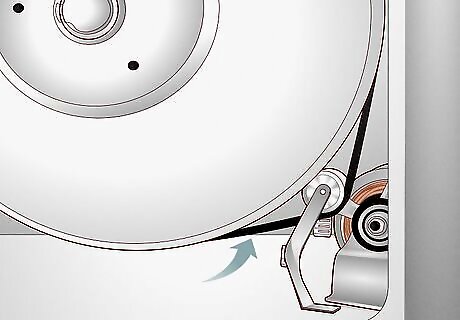
Locate the drive belt at the bottom of the drum. The drive belt is a long length of rubber that connects the pulleys and gears attached to your washing machine’s motor. The easiest way to find it is to look for the largest circular gear. The pulley should wrap around that before feeding around a sequence of smaller gears. If you’ve ever worked on cars or looked under the engine hood, the washing machine’s drive belt is basically identical in form and function to a car’s serpentine belt.
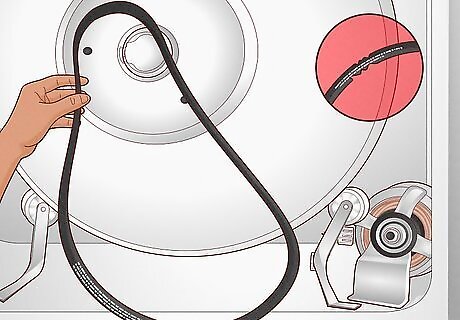
Confirm the belt is taut or replace it if it’s broken. If the belt is loose or snapped, that’s why your belt isn’t working. Purchase a replacement belt for your model and install it per your washer’s instructions. If the belt is tight and secure, it’s likely that your motor isn’t working and it’s time to call a professional repair person. If you don’t want to put the new belt on yourself, contact an appliance repair company. If you replace the belt yourself, reattach the panels before putting the washer back in place and run a dry cycle to confirm the washer is fixed.
















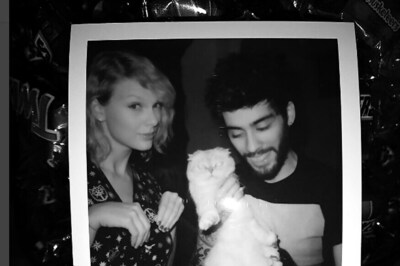

Comments
0 comment